The Double-Edged Sword of Auto Companies: Unmasking the Battery Cell Game That Could Shape EV Safety
![]() 04/29 2025
04/29 2025
![]() 549
549
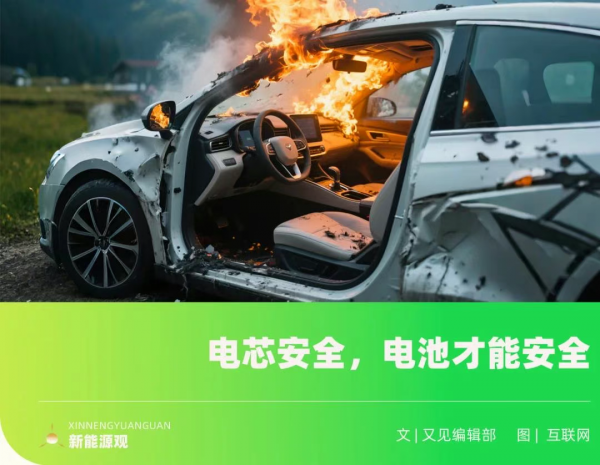
Original by New Energy View (ID: xinnengyuanqianzhan)
2443 words, 7-minute read
Have you ever wondered why despite automakers' claims of battery safety, electric vehicles (EVs) still occasionally catch fire in public spaces?
Public data indicates that in 2025, 72% of EV spontaneous combustion incidents were directly linked to battery thermal runaway, with nearly half of these vehicles claiming to have "passed national safety standards."
Behind this paradox lies a carefully orchestrated trap: automakers use top-tier battery cells in lab tests to pass extreme challenges like punctures and impacts, giving consumers the impression of "safe" batteries. However, mass-produced vehicles often mix cells from other, lesser-known brands, significantly compromising safety.
The battery cell is a vital component of the battery but is distinct from the complete battery system. Simply put, the cell comprises the positive electrode, negative electrode, electrolyte, and separator, functioning as the core unit for converting chemical energy into electrical energy and vice versa. In contrast, the battery system includes the cell, battery management system (BMS), and casing, forming a complete product installed in vehicles.
Imagine the battery as a bottle of wine; the cell is the wine itself. When purchasing wine, we focus on its taste and quality. If the wine is poor, no amount of fancy packaging can compensate. Only quality wine paired with exquisite packaging makes for a superior product.
In reality, many automakers overemphasize the "packaging" of the battery system while glossing over the crucial battery cell, intentionally confusing consumers and inadvertently leading them into battery safety pitfalls, thereby embedding hidden dangers in future vehicle use.
Therefore, in this safety game, consumers must pierce through automakers' rhetoric and directly address the core lifeblood of battery cells.
1. Battery Cell: The "Genetic Code" Deliberately Hidden by Auto Companies
In the microscopic world of power batteries, the cell is the "DNA chain" that determines safety. A 2025 industry report shows that Contemporary Amperex Technology Co. Limited (CATL) has reduced cell failure rates to one in a billion (PPB level) using atomic layer deposition technology (ALD), while some manufacturers still lag at one in a million (PPM level), with a risk gap of up to a thousand times.
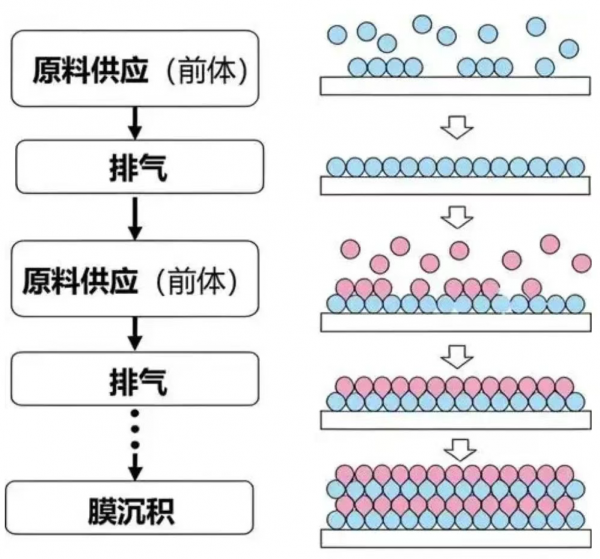
Figure/Principle of ALD Technology
Source/Screenshot from Internet and New Energy View
Due to an insurmountable technological gap, some battery companies opt to use price as a wedge to break into automakers' supplier bases, becoming secondary or even tertiary cell suppliers.
Automakers' strategy of using high-quality cells in select batteries to prove overall safety while secretly incorporating cells from other brands essentially decouples cell safety from packaging technology.
A 2024 case involving a new EV brand is illustrative: The battery pack used in its promotional video's puncture test featured CATL's "ultra-stable" cells, while mass-produced vehicles mixed "economical" cells from a tertiary brand. When tested, the latter's thermal runaway temperature was 42°C lower than CATL's, identified as the culprit behind multiple charging-related fires.
Even more concealed practices occur at the module level: A German brand was exposed for inserting "downgraded cells" into standard modules. These cells offer only 60% of the main cells' cycle life but conceal performance discrepancies through the BMS's "peak shaving and valley filling" strategy.
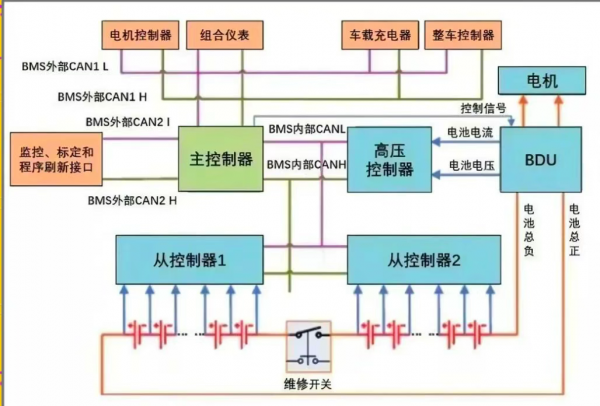
Figure/BMS Electrical Architecture
Source/Screenshot from Internet and New Energy View
Consumers should beware of automakers' "pseudo-technical barriers." A popular model's "nine-layer safety protection" is actually a remedial measure for low-quality cells: increasing thermal insulation material by 50% and configuring double coolant lines. These redundant designs, meant for extreme scenarios, become a "fig leaf" for mixed cells.
Industry experts note that 30% of such models' battery pack costs are spent on safety patches, which could be avoided with high-quality cells.
2. From Laboratory Myth to Road Reality: The "Double-Edged Sword" of Auto Companies
In automakers' elaborate "safety theater," nothing is more striking than the puncture test: as the steel needle pierces the battery, the monitoring instrument shows a stable temperature curve.
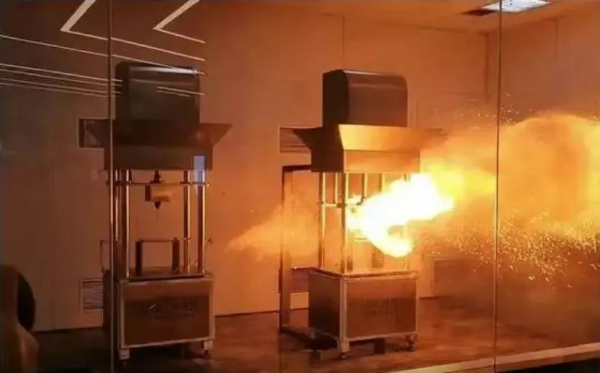
Figure/Battery Puncture Test Scene
Source/Screenshot from Internet and New Energy View
This could be a meticulously controlled "magic show" – a third-party agency disassembled and tested the battery, revealing not only CATL's special supply cells but also expensive phase change materials costing five times more than mass production solutions. However, consumer "mass production" battery packs lacked special cells and used only 80% of the phase change material.
This "special supply strategy" has a robust industrial chain. A battery engineer revealed that automakers customize "certification-specific modules": based on CATL's standard cells, they increase the positive electrode material by 20% and wrap the tab in gold foil, raising cell costs by 40%. These optimizations never appear in mass-produced products.
Mixing cells not only poses safety risks but also leads to hidden performance exploitation. Many owners report vehicles with a nominal range of 600 kilometers but an actual range of only 380 kilometers in winter. Disassembly revealed a mix of three cell types: CATL's NCM811 cells (energy density 280Wh/kg), a secondary brand's cells (250Wh/kg), and recycled cells (180Wh/kg).

Figure/Vehicle Range Issue Shared by a Car Owner
Source/Screenshot from Internet and New Energy View
This "cocktail" mixing forces the BMS to manage the system based on the lowest-performing cell, causing a range loss of up to 35%.
More seriously, mixed cells exacerbate battery aging differences – a testing agency found that in a 2-year-old mixed pack, 30% of cells had capacity attenuation below 80%, while the rest maintained 90% health. This imbalance significantly increases thermal runaway probability.
3. The Way Out: Pierce Through Automaker Rhetoric and Lock In the "ID Card" of Battery Cells
Safety anxiety persists among consumers, and automakers' overwhelming "battery safety" propaganda seems to offer a solution but actually conceals mysteries.
When sales consultants emphasize "independently developed battery packs" and "military-grade protection structures," most consumers don't realize these phrases divert attention from the core safety element – the cells within the pack, the true "heart" determining safety performance.

Figure/Battery Cell Structure Diagram - Schematic
Source/Screenshot from Internet and New Energy View
Some automakers focus marketing on pack casing protection and cooling systems but are tight-lipped about cell brands. Worse, some play the "mixed installation" game, using top-brand cells in high-end versions and mixing other suppliers' products in low-end versions. This "blind box" supply system leaves consumers vulnerable.
The solution is simple: when purchasing a vehicle, make the "battery cell ID card" a core clause, requiring salespersons to clearly state the cell manufacturer's full name, down to the specific model code, and include it in the purchase contract's "main components list."
During delivery inspection, compare the cell production code on the pack nameplate and verify its authenticity through the automaker's APP or by calling official customer service.
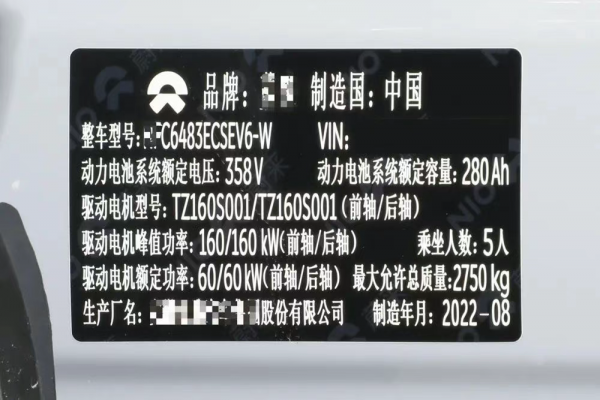
Figure/Example of Battery Pack Nameplate
Source/Screenshot from Internet and New Energy View
This traceability mechanism not only avoids word games but also forces automakers to establish a transparent supply chain. When every cell can be traced back to a specific production line, any attempt to pass off inferior products as superior will be exposed.
The safety revolution in EVs should not be a flashy marketing stunt but a quality marathon for every cell from the production source. When consumers learn to scrutinize battery cells' "genetic sequence" with a magnifying glass, automakers' meticulously constructed rhetoric fortress will crumble without attack. Only by returning power batteries to a "core-centric" era can we truly lay a solid foundation for EV safety.
4. Written at the End
When an automaker executive privately admitted that "saving 2000 yuan per vehicle in cell costs translates to 200 million yuan in profits for 100,000 vehicles," it reveals not only distorted business logic but also a lack of reverence for life.
By July 2025, when the new national standard GB38031-2025 for EV power batteries is implemented, compliant battery costs may rise by 15%-20%. This is a reasonable premium paid for safety.
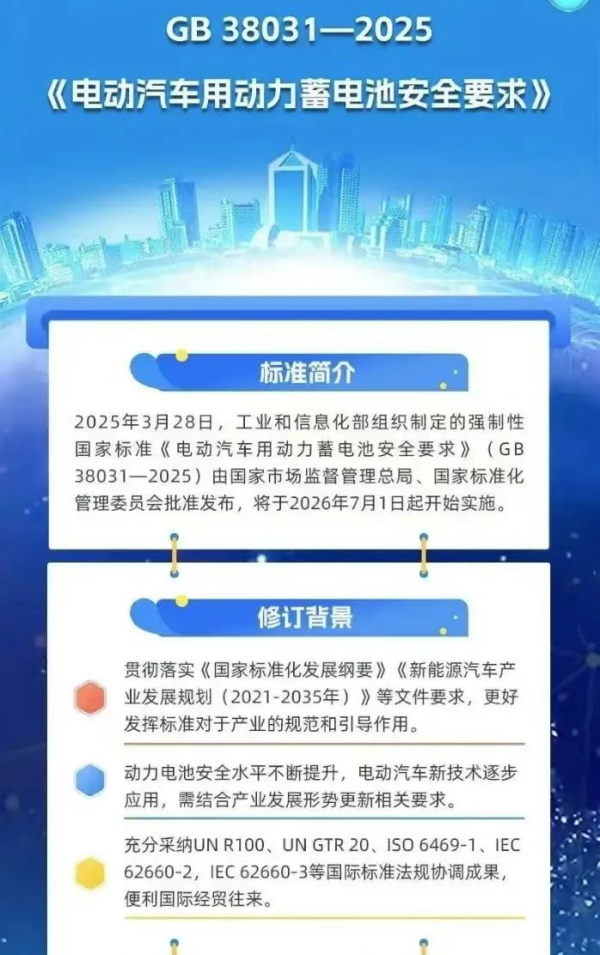
Figure/Introduction to New National Standard GB38031-2025
Source/Screenshot from Internet and New Energy View
Yet, consumers must arm themselves with law and technology, remembering: each cell's genes determine safety in the cockpit. The next time you step into a 4S store, look the salesperson in the eye and ask, "Does every cell in my battery come with a CATL ID card?" Only by turning this inquiry into a force for industry change can EVs truly steer towards a safe future.
【The headline image is generated by AI】








